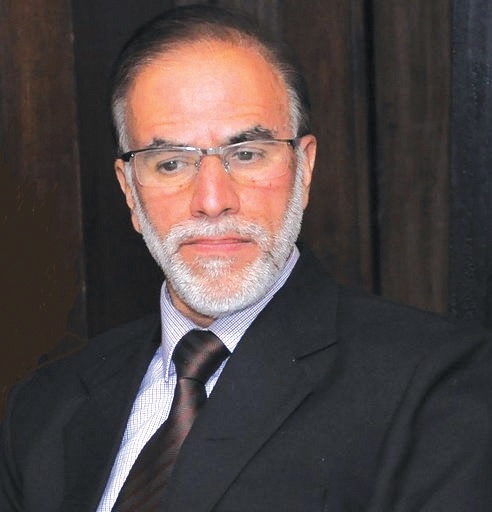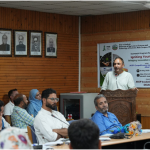The disturbing trend of suicides (self-annihilation) has emerged as one of the major concerns intimidating the societies, communities in the world. Developing a conceptual approach to prevent the risk-factor, social influence, and community-specific measures could act as a tool against the lethal phenomenon.
To understand how to prevent the stimulation of suicidal tendencies and how could an impulsive reaction be stopped, RisingKashmir’sFarzana Syed interviews valley’s renowned psychiatrist Dr Mushtaq Ahmad Margoob.
What is suicide?
Suicide is an act of self-annihilation or harming oneself with an intent to die or end one’s life to make an end to one’s suffering. Suicide can be termed as an act of killing oneself intentionally.
What are the ways to ward off suicidal tendencies?
Suicide is a serious public health problem which calls for an immediate action from all walks of life. A comprehensive public health approach is a pre-requisite to subside the risk of suicides.
Suicides impose long-lasting impact on individuals, families, and communities. Preventing suicide requires strategies at all levels of society. This includes prevention and protective strategies for individuals, families, and communities. We can help prevent suicide by learning the warning signs, promoting prevention and resilience with a positive attitude to bring in a social change.
This can be achieved by activating our resources, Strengthening economic supports, Strengthening financial security, creatingprotective environments, preventing the vulnerable persons from the risk of suicides. We need to create and improve healthy organizational policies and culture and blend in community-based policies and practices.
How can social influence be instigated to prevent suicides?
I believe that our society needs to blend in all perspectives to elude the disillusionment and uncertainty. The need of the hour is to develop a holistic and collective approach towards impeding the rationale causing suicides. The components of our society need to operate in a conventional manner. The disintegrating socio-cultural fabric of our society needs to be reinstated with profound emotional connect and empathy.
Socio-cultural factors matter in mental health. Whether it is society, community or government, all levels have to play their respective roles. The government needs to activate its mechanisms in practicality and implement their schemes for financially weaker sections of the society. Their woes need to be addressed not aggravated.
What are warning signs of suicide?
Depression, hopelessness, disparity, disappointment, behaviouralchanges, anxiety disorders. If you sense a behavioural change in a person, talk to them without wasting time, try to reach out to their state of mind. Encourage them to speak. This is the first step of instilling a sense of support in people with suicidal thoughts.
Is there a need to address lack of empathy, responsibility among social realms?
We have to make efforts to reach out to those worn and torn by the depressing condition of their lives. As a society we have to make efforts to revamp relevant strategies so that we can work for the downtrodden and financially weaker sections of our society. We need government resources, public health policies, to evolve models of prevention and implement these models to act.
We cannot prevent a person from dying of suicide just by preaching them or giving mere lectures and advice. By doing so we are isolating them further and pushing them to isolation.
What are the primary ways of preventing suicides?
The ideal method to prevent suicide is primary prevention. It requires effective treatment of psychological disorders, such as depression, anxiety, schizophrenia, bipolar disorders, trauma etc.
We need to address the grave concern of poverty, violence, divorce rates that trigger suicides. Let us promote a healthy lifestyle which may significantly contribute to primary prevention of suicides.
How can we reduce social stigma attached to suicides?
By creating awareness about mental health. By encouraging and providing moral support to those with mental health issues. Our society must shun the stereotypical mindset and be realistic. Due to social stigma attached to mental health problems, the victims are always reluctant to speak or seek help or even consider treatment. It implies lack of understanding on part of the family, friends, nears and dears.
We need to encourage the victims to speak by strengthening moral support and a sense of belonging. We need to encourage discourse on mental health.
What are other essential, adequate steps required to prevent suicides?
A timely intervention can be an imperative in preventing a suicide. We need a collective response, from members of all walks of society (irrespective of their social status and professions), government, NGOs, so that a holistic and multifaceted approach is put into place with immediate action plans.
Taping a person’s instinct at the right time could be a driving force to mitigate the trauma off a person with suicidal thoughts dwelling in his mind. Proper counselling, nurturing of youngsters in an eloquent manner to foster mental stability in them, could help in reducing the risk of rising cases of suicides.
The suicidal tendencies have erupted more among youth because in the present-day world they do not find a role model. Reinforcing moral values and religious education among youth can also help to prevent suicides.
It is pertinent to mention that our way of life has undergone a drastic transformation. How we live in contemporary times is quite contrasting to how our older generations have spent their lives. We need to perceive things in a more responsible and apt manner.
Awareness, cooperation and moral support provided to victims while they are fighting depression and emotional ups and downs, can help save lives. Although the victims pledge to end their mental trauma by resorting to taking their own life, they leave behind their families devastated and with a huge sense of guilt.
We need to address the issues of the youth, channelize their talent rather than imposing our decisions on them. All government or non-governmental organisations need to make timely intervention to subside the risk of suicides.
Awareness can be created in sermons, seminars, or at school levels to instigate a positive attitude towards life among our youngsters. Psychotherapy can also be effective in reducing the risk.
What are other ways to address the issue?
A strategic mechanism needs to be developed which must include, improve access and delivery of mental health care in general and suicide care in particular, provide and promote healthy connections at school level. Teach the children coping up and problem-solving skills.
Identify and support people at risk. Lessen harm and prevent future risk.
What should be the role of parents?
Parents need to address the issue with a serious but positive attitude. Let them strengthen and share a bond with their wards. Spare time off their busy schedules to address the grievances, issues of the kids. Time and again I keep saying ‘Give time to your children’. Bridge the gap which has evolved with the changing contemporary lifestyle. Establish the connection with kids so that they share their thoughts and issues with you. Bring them closer instead of pushing them to alienation and isolation.
What should be done if someone known is considering suicide?
Encourage them to speak. Do not lecture them on right and wrong. Listen to their issues, take immediate action, and come up with a resolution. A person’s suicidal behaviour could be influenced by listening to them, not by correcting them. Let us not belittle their emotions. Encourage them to give vent to their emotions, their feelings. Encouraging them to seek support and strength.
‘What are Copycat suicides, how can the phenomenon be prevented?
‘Suicide contagion’ that fuels uncalled for suicides is termed as ‘copycat suicide’. Off late a number of suicide attempts have been influenced by the copycat suicide trend.
The copycat phenomenon refers to the act of suicide after being influenced by media’s sensationalizing and unnecessary fudging of a particular suicide case.
The people suffering distress and depression are more vulnerable to consuming the exaggerated content put forth by the media. It is a fact that media and mental health go hand in hand.
Anyone in the world can develop suicidal thoughts. Media management regarding the portrayal of suicides has been perturbing. The copycat phenomenon has spiralled due to media’s exaggerating and sensationalizing of suicides. The appalling narrative fed to the masses by the media needs to be controlled. Let authorities restrict the sensationalising of suicides and impose regulations.
The snowballing impact of the media needs to be controlled to stop the immediate reaction from already depressed people.
This is a serious problem and needs proper address because it has wield enormous influence over the young who look up to them as role models. It tells them what to do and how to execute the same.








